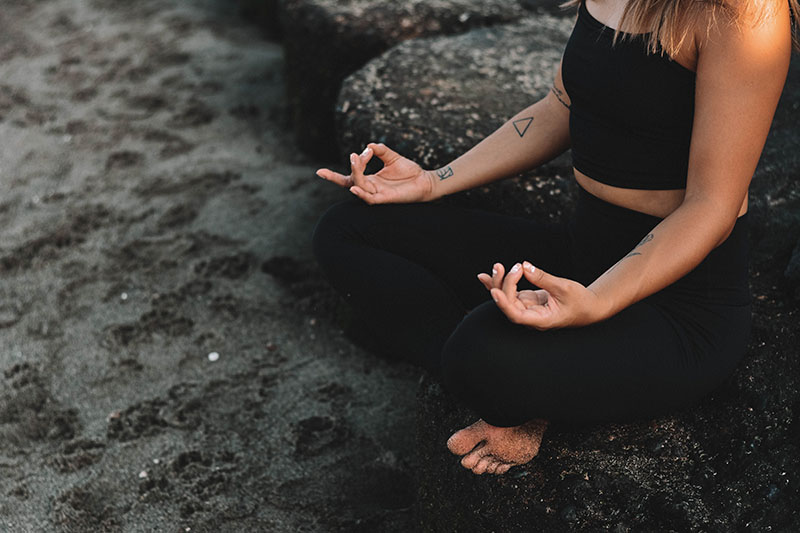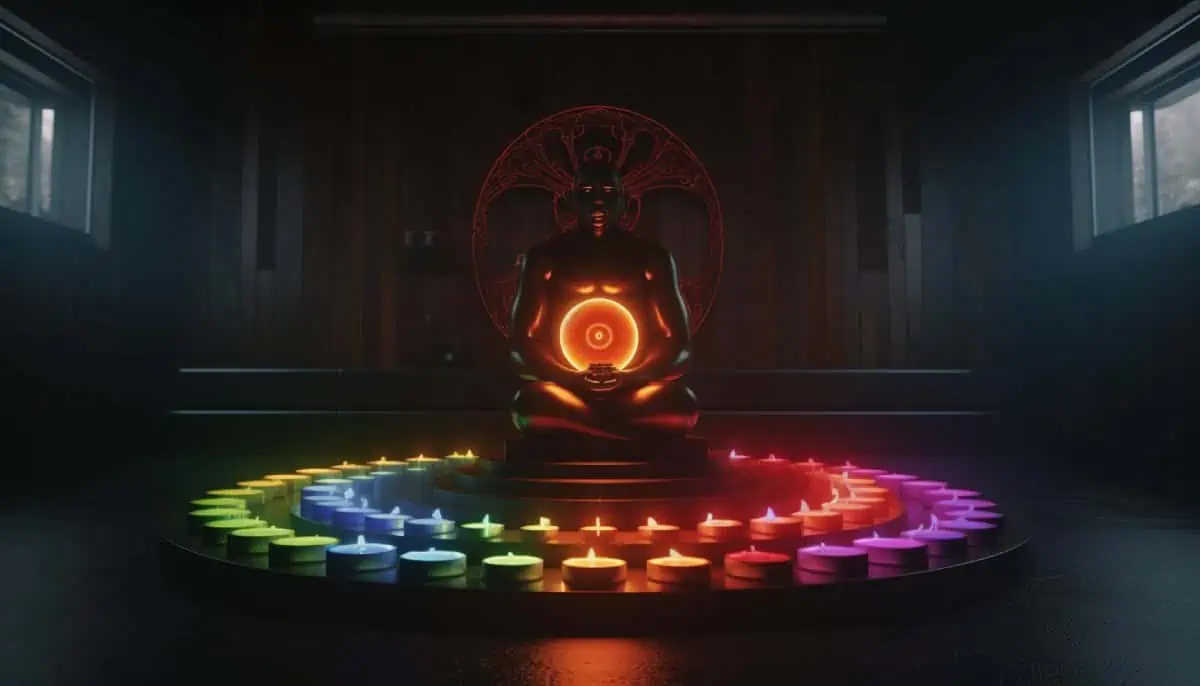Listen to this article:
Hand gestures are often seen in meditation, such as the common Gyan mudra resting on the knee with the thumb and second finger connected. But if you’re unfamiliar with these symbolic gestures, you’re probably wondering why meditators choose this hand position.
Mudras are used in many spiritual practices, including ancient Hindu and Buddhist ceremonies and modern-day yoga and meditation practices. They also play a role in energy healing as a method to heal chakra imbalances and bring the subtle body into alignment.
But how do these sacred hand gestures affect the chakras, and how can you use them to radiate energy and raise your consciousness?
Contents
What are mudras?
A mudra is a hand gesture that holds rich symbolism. Mudras are commonly used in rituals and spiritual practices to intensify the effects and enhance energy flow. The word mudra is a Sanskrit term that means ‘seal,’ mark,’ or ‘gesture.’
Free Cheat Sheet: The 7 Best Ways to Unblock Chakras
Download nowEach specific mudra has unique benefits and associations and connects to an element and one of the seven chakras. You can tap into the energy and qualities of a chakra mudra by using it with meditation, chanting, pranayama, or holding yoga postures that target the chakras.
Chakra mudras are all hasta (hand) mudras that involve the hands and fingers, but yoga mudras can be practiced with other body parts. For example, Māna (head) mudras are used in Kundalini yoga, and Bandha (lock) mudras are used in Hatha yoga. Additionally, Kaya (postural) mudras combine physical postures with breathing and concentration to promote relaxation in the nervous system.
Although there is no scientific research on the chakras, studies have been performed on the benefits of using mudra hand gestures. The research concluded that practicing mudras for an extended period can change the resonance in our energy fields.
What do hand gestures represent?
The fingers used in a mudra carry a specific and powerful meaning as each finger represents an element, mental state, and physical condition. For example:
- The thumb represents the fire element, which is connected to heat, transformation, and the exchange of chemicals in the body.
- The index finger represents the air element associated with communication, creativity, and intellect. It is also linked to movement and transportation in the body.
- The middle finger represents the space element associated with expansion and enhancement. It can increase knowledge and awareness.
- The ring finger represents the earth element, which has grounding energy linked to the connection to your life path and family roots.
- The pinky finger represents the water element, associated with emotion and flow. This element helps you regulate your feelings and go with the flow in life.
Root chakra mudras
The root chakra sits at the base of the spine and governs the elimination organs. It is associated with the earth chakra and is responsible for our sense of safety, security, and stability in life.
Muladhara mudra
One of the most commonly used mudras for the root chakra is the Muladhara mudra. It is believed that this mudra can invoke the goddess Sakini, which is related to this first energy center.
The grounding hand gesture also stimulates the elimination organs that the root chakra governs. Therefore, it is beneficial if you have any physical symptoms of a root chakra imbalance, such as colon or bladder issues.
To practice this mudra:
- Bring both palms together in prayer position, then interlace and bend the ring and little fingers.
- Join the tip of your index fingers and thumbs and turn them inwards, creating an interlocking figure 8.
- Keep your middle fingers straight with the ends touching and hold the mudra at the height of your pelvis.
- Chant Lam, the Muladhara’s mantra as you hold it.
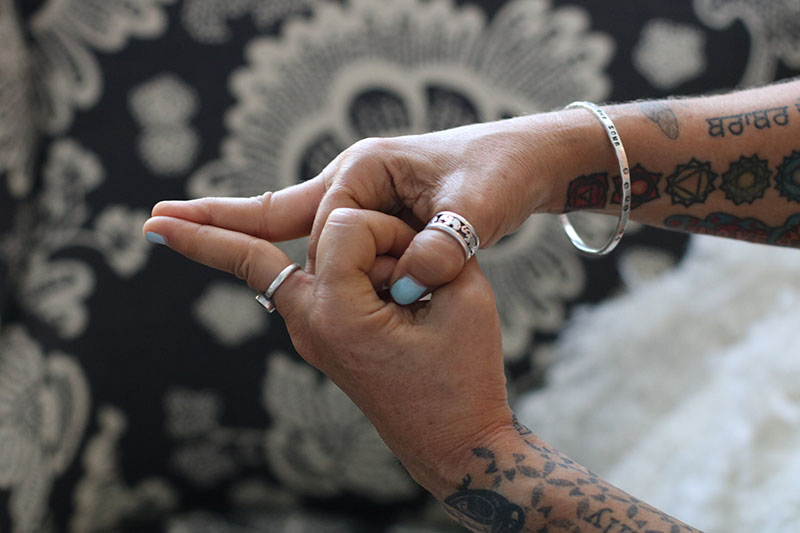
Prithvi mudra
The Prithvi Mudra, also known as the earth mudra, connects the fire and earth elements to activate the elemental force of the root chakra. This mudra heals many symptoms associated with the first chakra, such as fatigue and weakness. It also helps to strengthen the immune system, which is often compromised during stressful times when the root chakra is out of balance.
To practice the Prithvi mudra, connect the tip of your thumb with the end of the index finger, straightening the remaining fingers.
Chakra Test: Discover Your Strongest, and Weakest, Chakras
Take the free test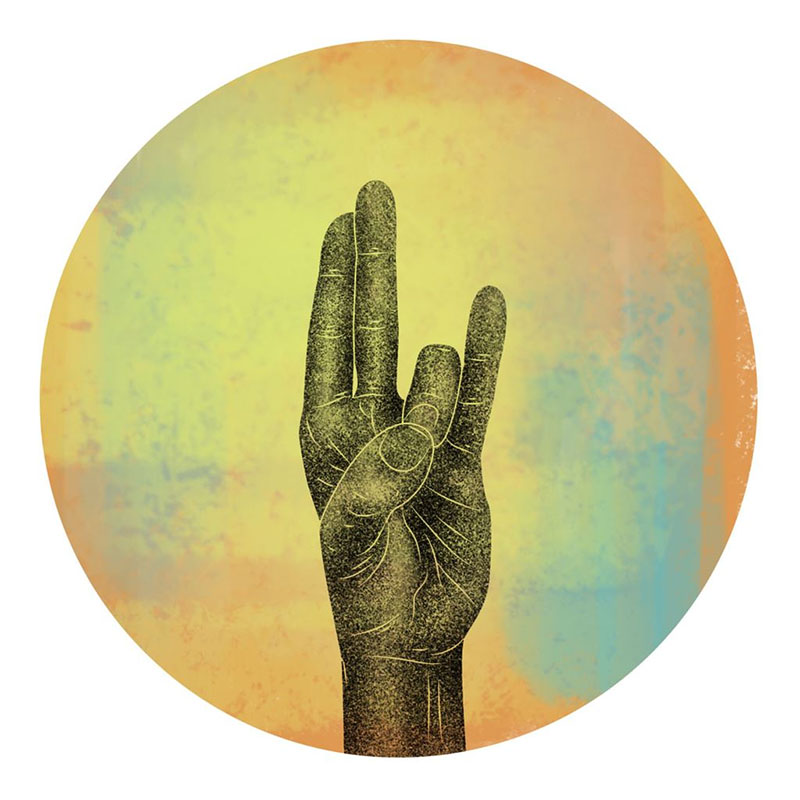
Sacral chakra mudras
The sacral chakra is located in the lower belly and governs the reproductive organs. It is associated with the water element and connected with emotions, creativity, passion, and flow.
Shakti mudra
Shakti Mudra is one hand gesture associated with the sacral chakra. Generally, it has a calming effect on the mind and nervous system, but it also helps soothe and relax the pelvic area. Therefore, this mudra practice is particularly beneficial for relieving menstrual symptoms or pelvic pain.
To perform the Shakti mudra:
- Bring the palms together, straightening and touching the tips of the ring and pinky finger.
- Curl the thumbs into the palms and wrap the index and middle fingers over them, as shown below.
- Hold this mudra in front of the lower belly while you chant Vam.
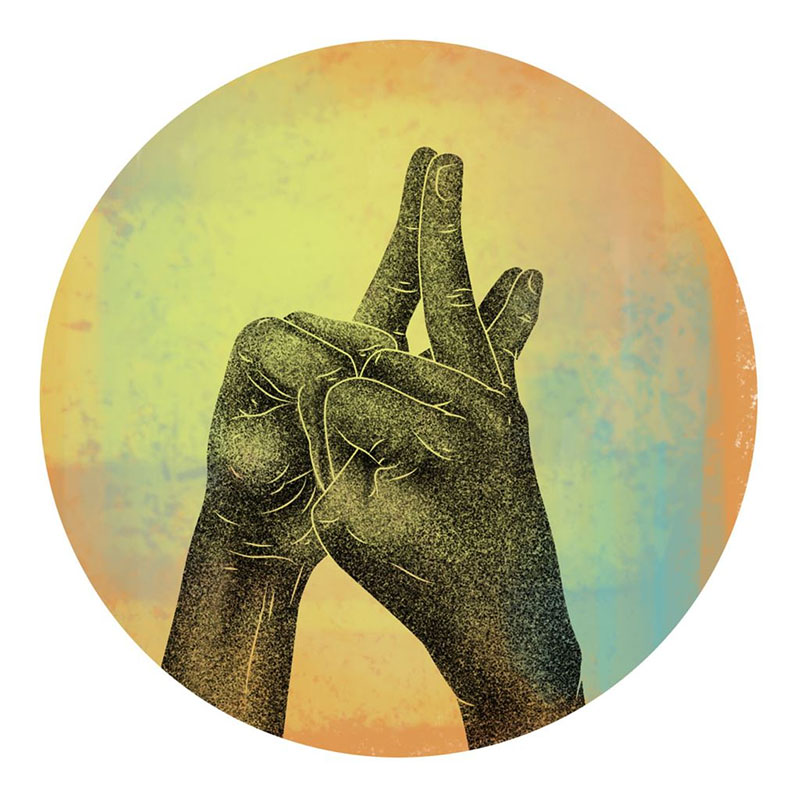
Yoni mudra
Yoni in Sanskrit means’ womb,’ and this mudra is associated with the female Hindu god Shakti. This mudra is particularly beneficial for women as it activates the Swadhisthana energy around the reproductive organs. It has the power to heal ailments connected to the sacral chakra, such as reproductive and fertility disorders, and it can also help to balance our emotions when we feel anxious.
To practice this sacral chakra mudra:
- Bring your hands in front of your pelvis
- Connect the tips of the thumbs and the ends of the index fingers.
- Point the thumbs out, and the index fingers down, forming a triangle.
- Allow the remaining fingers to touch or interlace them, as shown below.
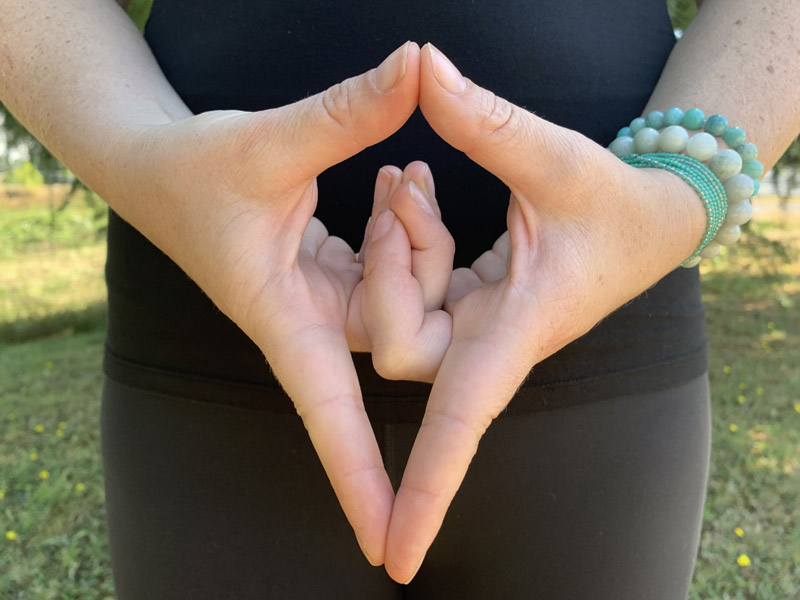
Solar Plexus chakra mudras
The solar plexus chakra is linked with the fire element and sits between the belly button and the ribs. It governs our digestive system and is the center of our personal power, responsible for our feelings of self-confidence, courage, and inner strength.
Rudra mudra
One beneficial hand gesture for the solar plexus chakra is the Rudra mudra, known as the gesture of strength. Using this in your meditation can help relieve digestive stress, a common sign of an unbalanced Manipura chakra. It is also said to help increase positive thinking, willpower, and inner strength, essential qualities of the solar plexus chakra.
To practice this mudra, bring the tips of your index and ring fingers to touch your thumb while extending the middle and pinky fingers, as shown below.
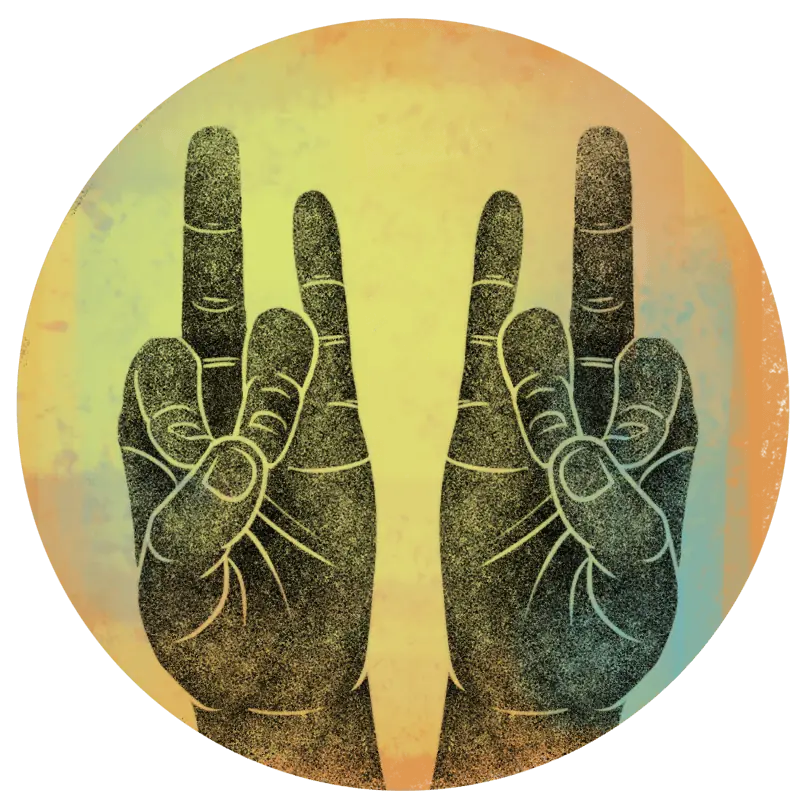
Matangi mudra
The Matangi chakra mudra evokes the power of Goddess Matangi, giving you the strength and willpower you need. It cultivates determination, relieves fear and anxiety, and improves digestive function. It is an excellent hand gesture if you have stomach pains, and it can also help improve the condition of the gallbladder, spleen, pancreas, and kidneys.
To practice this chakra mudra:
- Interlace all your fingers.
- Release both middle fingers, pressing them gently together.
- Bring the mudra to the location of the solar plexus, pointing upwards.
Heart chakra mudras
The heart chakra sits in the center of the chest and is linked to the lungs, heart, shoulders, and hands. It governs the respiratory system and is connected to the air element. In addition, the heart chakra carries the qualities of love, compassion, understanding, forgiveness, and gratitude.
Padma Mudra
The Padma Mudra, also called the Lotus Mudra, stimulates the heart chakra by promoting unconditional love and compassion to all beings. Therefore, meditating with this mudra can help open your heart, release grudges and negative emotions, and bring more harmony into your relationships. Lotus Mudra also promotes self-love, so it can improve your self-worth and combat feelings of loneliness and isolation, other signs of a blocked heart chakra.
To practice the Padma Mudra, bring the palms of your hands together, connecting the base of the wrists, the pinky fingers, and the thumbs. Next, open and spread your index, middle, and ring fingers, creating an image of a blooming lotus flower. It is best to hold this mudra close to your heart center, chant Yam, and focus on the green healing energy.
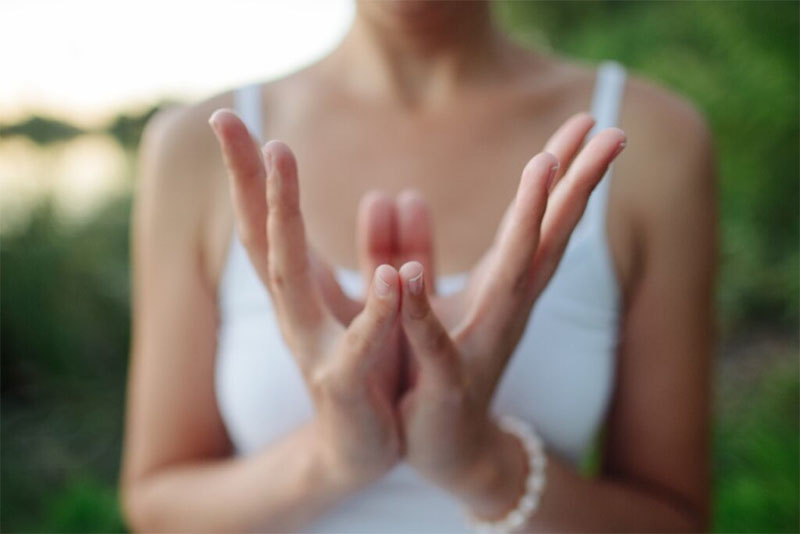
Hridaya mudra
The Hridaya chakra mudra also powers up the heart chakra and helps ailments relating to heart health, such as high blood pressure. It also helps release built-up emotions and reduces stress and anxiety in emotionally trying times.
Practice this chakra mudra by:
- Joining the thumb to the tip of the ring and middle finger.
- Pointing the little finger.

Throat chakra mudras
The throat chakra sits in the center of the throat and is associated with the ether element. The throat chakra is responsible for our self-expression and communication skills and is linked to the thyroid, neck vertebrae, mouth, teeth, and gums.
Granthita Mudra
Granita Mudra is one hand gesture connected with the throat chakra. It helps this energy center by bringing nourishing energy to the throat and thyroid, healing any physical ailments caused by an underactive Vishuddha chakra. Hold this gesture while you chant Ham, the Vishuddha’s Bija mantra, to increase your confidence and connect to your truth.
This throat chakra mudra is easy to do. First, interlace all your fingers into a clasp, then join together the tips of your left thumb and fourth finger and your right thumb and index finger.

Third Eye chakra mudras
The third eye chakra is located between the eyebrows and is associated with our brain, vision, and pineal gland. This chakra allows us to connect to our intuition and imagination and enhances our memory and creative thinking.
Gyan mudra
The Gyan chakra mudra sends energy to the third eye chakra and increases mental concentration and focus. It also activates the air and fire elements by connecting the thumb with the second finger. This energizes the mind, nervous system, endocrine system, and pituitary gland.
It is one of the most recognized and used meditation mudras used in various spiritual traditions and is extremely easy to do. Simply connect your thumb and index finger while straightening the remaining fingers.

Hakini mudra
The Hakini chakra mudra stimulates the third eye chakra and is named after the Goddess Hakini, representing imagination, clairvoyance, intuition, and inner knowing. This mudra brings higher concentration levels and relieves brain fatigue and mental tension.
To practice this one, lightly connect all tips of fingers and thumbs and bring your hands up to the third eye. Then, point the three middle fingers upwards, as shown below.
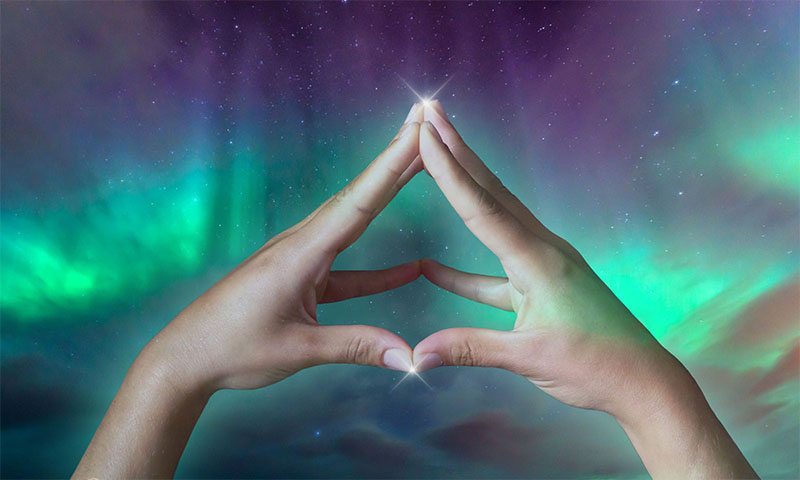
Crown chakra mudras
The crown chakra is located above the top of your head, just off the physical body. The energy center strengthens our connection to the divine and is linked to universal consciousness and enlightenment.
Thousand Petals mudra
In Sanskrit, Sahasrara translates to “thousand-petaled,” and The Thousand Petals mudra can create a gateway to transcendence and the divine when used in meditation and chanting. With the palms turned away from you, touch the tips of the index fingers and thumbs, forming a pyramid shape. Keep all fingers straight as you hold the mudra over the crown of your head.
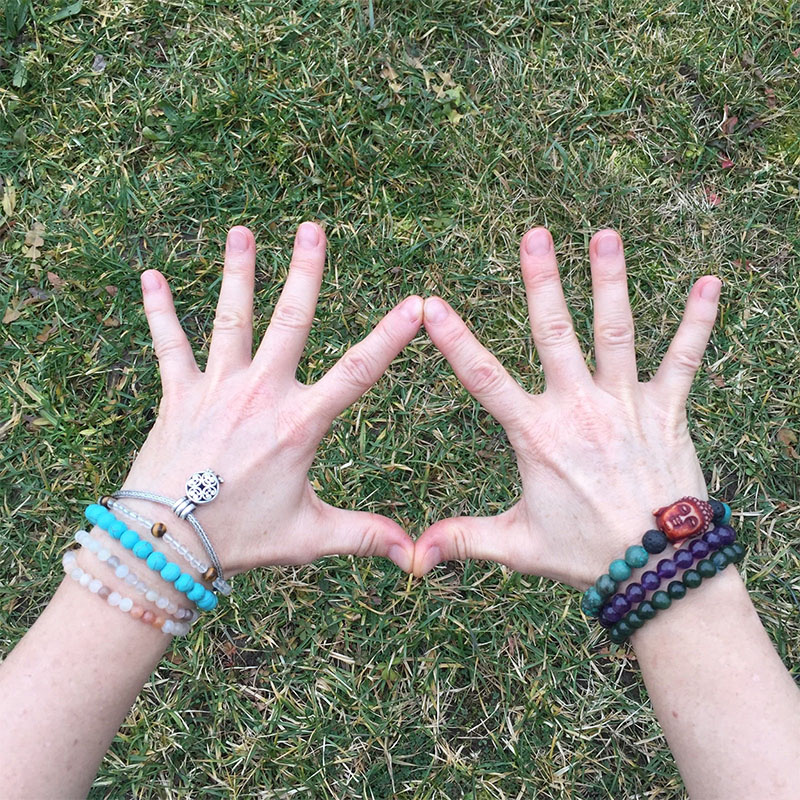
Final thoughts
Mudras are an ancient sacred healing tool that can be just as beneficial today as centuries ago. There are specific mudras for all seven chakras, so you can easily incorporate these symbolic hand gestures into your yoga, chanting, or meditation practice.


